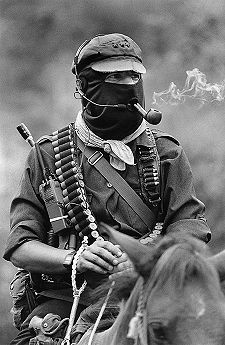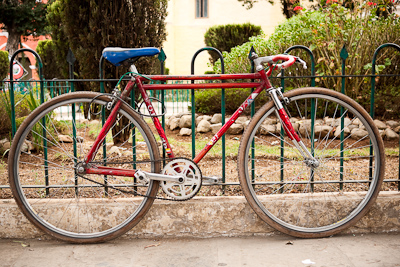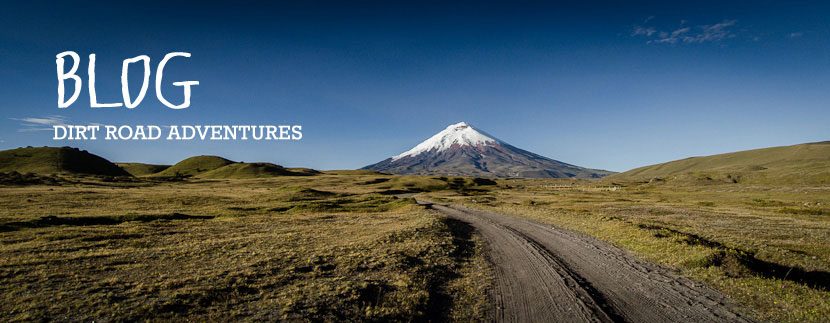I’m now in Merida, Yukatan, melting in the midday sun, and still playing catchup on the blog. I’ll get there… In the meantime, here’s some thoughts on San Cristobal…
Perched at a lofty 2100m amongst the pine forests of the central highlands of Chiapas – a welcome respite from the sweltering coastline – San Christobal could just be my favourite place in Mexico so far.
Like most of Latin America, its cobbled colonial streets shroud a dark past, and one that’s worth knowing to understand its present. Founded in the 16th century, it was known as Villaciciosa – the Evil City – thanks to the heavy-handed exploitation of the indigenous people who lived there. It seems that not much changed over the ensuing three hundred years… In 1994 Chiapas hit the international headlines with its Zapotista uprising – an armed movement that aimed to protect the rights and rich resources of the state’s large indigenous population – some thirty per cent – from the usual exploitation at the hands of economic globalisation…
It’s a classic story. Chiapas is said to be the poorest state in Mexico, with around 80 per cent of the indigenous communities lacking access to clean water, hospitals or electricity. Yet the state produces 30 per cent of the electricity for the whole country, and there’s plenty of resources – coffee, gas, petrol, corn.
San Cristobal de las Casas’ current name is a melange of its patrion saint, and Bartomole de las Casas, its first bishop, and a man who strongly defended the rights of its Indian population. Nowadays it’s a peaceful spot to hang out, listen to live music, read, learn about its Zapatista history – an upriding that went on to establish a limited but relatively successful patchwork of autonomous regions in Chiapas – and stop sweating for a few days…

Libraria Cultura Cubana. San Cristobal is a centre that for all that is Zapotista and Che. But beyond its marketing of the Zapatista movement – the place is awash with masked dolls sold in the handycraft market and Subcomandante Marcos T shirts – it’s a city with a strong political leaning; pointed grafitti and stencils decorate almost every street corner.

Founded in 1528, San Cristobal’s low slung colonial architecture is incredibly photogenic. I spent most of my time simply wandering taking pictures and and soaking up the scene.

Along with its revolution theme, there’s a sense of latin romance to the city too.

Stone slab roads and Beetles lend the city real character.

Unfortunately, San Cristobal also suffers from traffic that clogs its narrow streets. Nowadays there aren’t too many of these old American goliaths nudging their way through town, through – like the rest of the country – pleasure driving round the congested streets at night seems to be a strangely popular pastime. It’s a real shame that Mexico seems to be moving towards an ever increasing car culture.

Vibrant street colours – must have had Velvia film in mind…

The central food market is a sense sensation, teeming with indigenous locals presiding over mounds of vegetables, fresh pastries, slabs of meat, blended exotic juices, and all sorts of intriguing, unfamiliar wares, brought in from the villages nestled in Chiapas’ outlying hills.

The handicraft market is packed with colourful fabrics and traditional jewelry. There’s plenty of trinkets to buy, like these Day of the Dead figurines. El Dia de los Muertos is held on November 2. One of the most important festivals in Latin America, it’s the time families celebrate those who have died.

I limited myself to investing in a few extra garments to keep warm – a new set of legwarmers, and a cosy local hoody.

Back in the local market, its all about cheap cosmetics and clothing. In Mexico, the backside is a particularly important part of the anatomy.

I also made a side trip to visit the Caracol Ouentic, home to the governing body of one of the Zapatista autonomous regions. An hour´s drive away along windy mountain roads, I can`t imagine a `government`with such a grassroots, community feel. After submitting our passports, and a slightly tense interview held by men in black balaclavas and scarves obsuring their faces, we were invited to explore the area, ask questions about the Zapotista philosophy, and take photographs of the incredible murals painted on the walls of its official buildings. I’m pleased to report that they loved the fact I was cycling through Mexico, and I received warm handshakes all round!

Although the Zapotistas rose up and fought with weapons – albeit old rifles and sticks for the most part – they do seem to be a people genuinely seeking a peaceful solution to the problems the indigenous people are facing. The most recent of which is NAFTA, the North American Free Trade Agreement, which has driven down the price of corn with cheap, GM-derived foreign imports. Overall though, the Zapatista sphere of influence is still very small within the state.

Che is popular around here.

The Zapotista saying: Just like a snail – slowly we advance. Corn is also an important symbol, as shown by all the hooded Zapatistas emerging from this cob.

Photos from the uprising in 1994.

The spokeperson for the movement was the highly eloquent, staunchly socialist and somewhat mysterious Subcomandante Marcos – who cuts quite a figure astride a horse, puffing on a pipe through the mouth hole of his black balaclava. Although the Zapotistas only occupied San Christobal for a day, it was the beginning of long, protracted and controversial negotiations that culminated in the establishment of a series of caracols – small bodies that govern over its autonomous regions in a community-minded way. There, they set up the Councils of Good Government, which aimed to counteract those of the Mal Gobierno – the Bad Government – which is how the Zapotistas refer to the Mexican national system. Having set up this handful of caracols, the Zapotista leaders disappeared once more into the anonymity of the jungle…

Back in San Cristobal. Here I am, befriending a dog from one of the hostels. His name? Che…

I also made a side trip out to San Juan de Chamula, whose church is an intriguing blend of Catholicism and shamanistic practises. Enter through its beautiful, colourful portal and where there would normally expect to find pews, the floor is covered in a bed of pine needles. Locals gather to light candles, their size and shape dependent on the problems they are facing, and to drink fizzy drinks, which help them burp out evil spirits…

I expect San Cristobal has some incredible singletrack, though I’m ashamed to say I was too lazy too sample any. I did, however, admire the fine collection of bikes around town. As old as they are, they seemed way ahead of their time. All the rage in Europe and the States, locals have been cruising around on these cool cats for years – singlespeeds with massive 700c tyres for the rough roads.

Indeed, San Cristobal has a strong bike culture – I saw flyers for a local bike messenger company. Even renting a bike has a Zapatista theme.

It’s also packed with bars and restaurants to fritter away your pesos. This place, run by an Argentian, served up delicious tacos for juch 6 pesos each – about half a dollar.

With its tribal-style drummers loping around town and gathering on street corners or in the Zocalo, there’s a real hippy vibe too.

Like Subcomandante Marcos, Maria Sabina also pops up on posters and postcards. Back in the 60s, she was the first Mazatec Shamans to allow Westerners to experience the healing ritual, which involved taking local halucinagenic mushrooms to ‘open the gates of the mind.’

Chiapas is the number one producer of coffee in Mexico. Paintings on a cafe wall: a woman rising up to fight is a powerful image.

More Beetles tucked away in the backstreets…

Old VWs strategically parked for maximum colourful impact…


Cycle power and a freshly squeezed orange juice, part of my daily ritual.

Posada 5, the hostel I camped in for over a week. It’s behind the food market on Comitan 13. Track it down! An amazing garden, and amazing people…

Meet Los Muchachos. Posada 5’s two chickens were never apart, running riot in the garden and stealing food. I love these guys, and even made a video of them that I`ll post if I can figure out how.

Residents of Posada 5, Tian and Sarah, from Argentina.

The incredibly tall (and kindhearted) Frenchman Romain, who I cycled with in Oaxaca, and who I’ll be travelling with in Chiapas.

Yolanda, who rules Posada 5 with a firm but fair hand, with her girls – Megan, Claudia and Rececca.

And here’s my dentist! I met Alba through Peter, her boyfriend, who was camped next to me. Peter overheard me begrudging the pain in my teeth, so pointed me to her practise a few buildings down the street. After a somewhat intense week’s worth of visits –(I no longer fear injections deep into the nerves behind my gums), the pain has gone… Thanks!

Finally, it was time to drag myself away from this wonderful haven and take once more to the road. Scott from Porcelain Rocket has sent me a new, extra roomy framebag, so for this next segment – the Tour de Chiapas – I’m going ultralight! I even cut the sleeves off my T shirt!
The Need to Know Section
Cheap digs: lots of dorms around town for 60 pesos, or nice doubles for 150. I camped at Posada 5, on Comitan 13, for 50 pesos a night. Great vibe, with a kitchen, wifi and a real charm to the old building. Say hi to Yolanda and El Profe.
Cheap food: unearthing all the offerings from the food market will stand you in good stead, from pre-cooked delicacies to produce you can take home and cook at your guesthouse. We made a lot of licuados. Cheap taco stands sprout up in the evenings when the stall holders have gone home, for 5 pesos a pop. Otherwise, the pedestrian Real de Gouadeloupe and 5 de Mayo are awash with restaurants and bars. La Vina de Bacco does a glass of wine and tapas for 18 pesos, or 25 for a warming mug of mulled wine with fruit. On Belezario Domingue, on the market side of Gouadeloupe, is the superb Argentinian taco restaurant – it says, quite simply, Tacos on the sign outside.
Internet: plentiful around town, for 10 pesos an hour. And wifi is common in guesthouses.
Other stuff: Kinoki is a cool and friendly hangout, with documentaries and movies shown on the roof terrace every evening – there`s plenty on the Zapatistas. Find it at Real de Guadeloupe and Belizario Domingue. You can catch a collectivo from down in the market to Caracol Oentik for 25 pesos or so. Don’t forget your passport.




Hey Cass…Chiapas looks awesome…loving the Comandante Marcos vibe. You look like you are having an awesome time…hope to catch you soon…lots to catch up on at our end.
Take care and travel safe, fast and light…S
Cass, awesome post! Brings me back to my very brief blow through San Cristobal in the summer of ’94. We passed many military road blocks and even had to drive around a Zapatista road block in the middle of the night. I remember the young army grunt haphazardly waving around his M-16 as he checked our passports. We also stayed for many days at Agua Azul, jumping off waterfalls and playing soccer in the jungle with the locals. Enjoy that beautiful town…and the highlands of Guatemala to come!
Loving the murals and leg warmers 🙂
x
Pingback: A(nother) week in Chiapas « while out riding